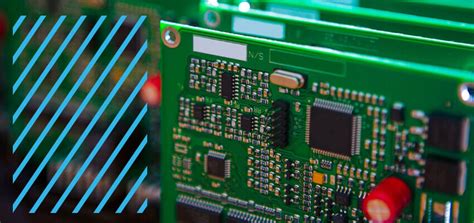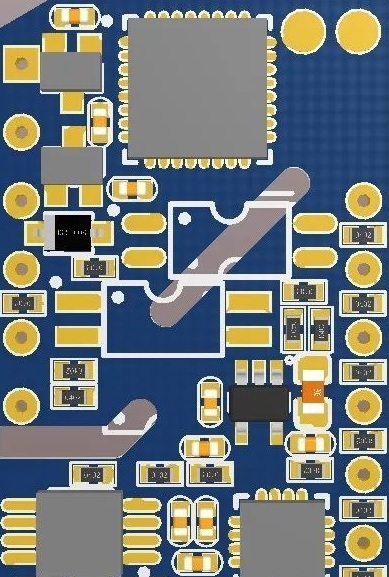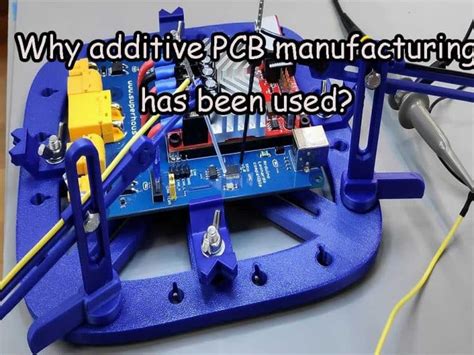Streamlining Innovation: Custom Circuit Board Assembly Simplified
Key Takeaways
The process of custom circuit board assembly (pcb assembly) plays a crucial role in bringing innovative electronic designs to life. By simplifying the pcba process, companies can effectively enhance the overall efficiency of their production and development cycles. Key strategies in streamlining this assembly process include adopting innovative techniques that not only improve accuracy but also reduce lead times. Emphasizing automation and advanced tooling can significantly elevate productivity, allowing engineers to focus more on design innovations rather than on labor-intensive tasks. Moreover, implementing best practices for quality control ensures that the manufactured pcba meets the desired specifications and reliability standards. As industries continue to evolve, understanding these critical components will be essential for businesses aiming to thrive in a competitive landscape, thereby underscoring the transformative impact of a simplified approach to custom circuit board assembly.
Introduction to Custom Circuit Board Assembly
The process of pcb assembly, often abbreviated as pcba, is a vital component in the development and manufacturing of electronic devices. In essence, it involves the assembly of electronic components onto a printed circuit board (PCB), where these components are soldered into place to create a functioning electronic circuit. Custom circuit board assembly specifically refers to tailored solutions designed to meet unique specifications and requirements of various applications. This innovation has transformed the landscape of electronics, showcasing how modern techniques can simplify both design and production.
Streamlining this process is essential, as it not only reduces lead times but also enhances overall efficiency and productivity. Utilizing advanced methodologies such as surface mount technology (SMT) allows for densely populated boards, which can subsequently elevate performance while minimizing space. Moreover, companies that embrace automation within their pcba workflow often notice significant increases in accuracy and speed, ultimately benefiting product development timelines.
“Adapting your pcb assembly processes to incorporate innovative strategies can propel your projects from concept to market with remarkable efficiency.”
In this era of rapid technological advancement, the relevance of effective custom circuit board assembly cannot be overstated. By understanding the intricacies involved and implementing best practices, organizations are better equipped to meet growing demands while enhancing product reliability. The fusion of experience and innovation in pcb assembly processes will pave the way for a new era in electronics manufacturing, emphasizing not just speed but also quality and sustainability.
The Importance of Streamlining the Assembly Process
Streamlining the pcb assembly process is crucial in the realm of technology, as it allows for improved efficiency and reduction in production costs. An optimized assembly line ensures that each step, from design to production, is executed with precision and minimal waste. By adopting innovative methodologies, such as lean manufacturing principles and just-in-time inventory, companies can significantly enhance the speed and quality of their pcba production. These systems not only minimize delays but also reduce the likelihood of errors that can arise during the assembly process. Furthermore, effective streamlining facilitates better communication among teams involved in the design and manufacturing phases, leading to a more cohesive approach to product development. The adoption of modern technologies such as advanced robotics and automation tools plays a pivotal role in this transformation, paving the way for a faster turnaround while maintaining high standards of quality. Ultimately, ensuring that the pcb assembly process is efficient can lead to greater innovations in technology as products reach the market quicker and meet evolving consumer demands.
Innovative Techniques for Efficient Circuit Board Design
In the realm of pcb assembly, the integration of innovative techniques has significantly transformed the design process, effectively enhancing efficiency and accuracy. One key method is the use of advanced computer-aided design (CAD) software, which allows engineers to create intricate layouts with greater precision. This not only streamlines the initial design phase but also minimizes errors that can occur during manual drafting. Another technique involves adopting modular design principles, enabling components to be easily swapped and tested, promoting a more flexible pcba process. The trend towards using automated pick-and-place machines is also noteworthy, as these devices drastically reduce assembly time while increasing overall output quality. Moreover, implementing design for manufacturability (DFM) principles ensures that every aspect of the circuit board is optimized for production efficiency, which further accelerates timelines and reduces costs. These innovative approaches collectively contribute to a more streamlined pcb assembly process that fosters improved product development in today’s fast-paced technology landscape.
Enhancing Production through Automation and Tooling
In the ever-evolving landscape of pcb assembly, enhancing production efficiency has become a pivotal focus for manufacturers. One of the most significant advancements in this realm is the incorporation of automation and tooling strategies. By integrating automated processes, companies are able to reduce manual errors, speed up production times, and ensure consistent quality in their pcba operations.
Automation technologies, such as robotic arms and automated optical inspection systems, play a crucial role in streamlining the assembly process. These systems can perform tasks such as soldering, component placement, and inspection without the variability that human operators might introduce. This not only enhances precision but also frees up skilled workers to focus on more complex assembly tasks that require critical thinking and expertise.
Tooling, on the other hand, involves employing specialized tools designed specifically for circuit board manufacturing. Such tools can include customized jigs and fixtures that support the accurate placement of components on printed circuit boards (PCBs). By investing in high-quality tooling, manufacturers can further reduce cycle times and increase throughput while also minimizing waste generated during the production process.
The table below summarizes key benefits of implementing automation and tooling in custom circuit board assembly:
| Benefits | Description |
|---|---|
| Reduced Labor Costs | Automation decreases reliance on manual labor, cutting costs. |
| Improved Precision | Automated systems enhance placement accuracy for components. |
| Increased Speed | Rapid production cycles lead to faster time-to-market. |
| Enhanced Quality Control | Automated inspections help maintain high quality standards. |
| Scalability | Easily adapts to varying production scales without compromising quality. |
By leveraging these innovative techniques in pcb assembly, companies are not only revolutionizing their manufacturing processes but also positioning themselves for sustained success in a competitive market landscape. The move towards automation and precision tooling is more than just a trend; it’s a necessary evolution that paves the way for more advanced technology development in the future.
Best Practices for Quality Control in Custom Assembly
In the realm of pcb assembly, maintaining the highest standards of quality is crucial to ensuring the reliability and performance of electronic products. Implementing stringent quality control protocols throughout the pcba process can significantly reduce defects and enhance overall efficiency. One effective strategy is to establish a comprehensive inspection regime that includes both automated and manual checks at various stages of production. For instance, employing advanced imaging technology can facilitate real-time analysis of circuit board layouts, thereby detecting potential issues before they propagate through the assembly line.
Furthermore, conducting routine tests such as electrical continuity checks or functional testing can identify malfunctions early, reducing costly rework and ensuring that only defective units are addressed post-assembly. In addition to real-time inspections, fostering a culture of quality within the assembly team is essential. Providing ongoing training and clear communication about quality expectations can empower team members to take ownership of their roles in maintaining standards.
Lastly, incorporating feedback loops into the production process allows teams to learn from past mistakes and continuously improve their pcb assembly practices. By analyzing defect rates and implementing corrective actions promptly, one can strive for a cycle of perpetual enhancement in quality control efforts, ultimately leading to more successful products entering the market.
Case Studies: Successful Implementation of Streamlined Processes
In recent years, numerous companies have successfully adopted pcb assembly strategies that emphasize efficiency and innovation. For instance, a prominent tech firm integrated state-of-the-art automation in their pcba process, drastically reducing production time and minimizing human error. By utilizing robotic arms for components placement coupled with advanced inspection technologies, they were able to enhance their quality control measures. This not only improved the accuracy of the pcb assembly but also streamlined the overall workflow, allowing engineers to focus more on design innovation rather than repetitive tasks.
Another beneficial example is seen in an automotive manufacturer that sought to optimize its pcba supply chain. By implementing Lean methodologies during their circuit board assembly processes, they eliminated unnecessary steps and created a more adaptable manufacturing environment. This resulted in quicker turnarounds for new vehicle models and reduced costs associated with excess inventory. Moreover, their shift to just-in-time production principles meant that the components assembled were precisely what was needed at any given moment, thus enhancing overall operational efficiency.
These case studies demonstrate that adopting innovative practices in pcb assembly can lead to significant advancements in production capabilities. Companies embracing these streamlined processes not only improve their operational metrics but also position themselves favorably within competitive markets, paving the way for continued growth and technological development. As industries evolve, the role of effective circuit board assembly will undoubtedly become more central to achieving long-term success.
Future Trends in Custom Circuit Board Assembly
As technology continues to evolve, the pcb assembly landscape is also experiencing significant transformation. One of the most notable trends is the increasing integration of advanced materials to enhance performance and durability. Manufacturers are exploring the use of flexible substrates and high-density interconnect (HDI) technologies, allowing for more compact designs without sacrificing functionality. Additionally, the adoption of automation in pcba processes is on the rise, streamlining production and minimizing human error. Robotics and artificial intelligence are being utilized to increase precision and speed in assembly lines, resulting in improved efficiency and reduced time to market. This shift towards smart manufacturing not only enhances productivity but also facilitates customization—the ability to create tailored solutions that meet specific customer needs more effectively. Furthermore, sustainability is becoming a critical focus, prompting companies to implement eco-friendly practices throughout the circuit board assembly process. From material selection to waste management strategies, industry players are aiming to minimize their environmental footprint while maintaining high-quality standards. Collectively, these trends signal a promising future for custom circuit board assembly, with innovative approaches shaping how products are designed and manufactured in an increasingly complex technological landscape.
Conclusion: The Impact of Simplification on Technology Development
The evolution of pcb assembly processes has consistently demonstrated a significant impact on technology development, particularly through the advancement of custom circuit board assembly (PCBA). As companies strive to remain competitive, the need for streamlined operations becomes paramount. By simplifying the pcba process, manufacturers can achieve innovative solutions that not only reduce production times but also enhance the overall quality of electronic products. The implementation of advanced techniques—such as automation and precision tooling—facilitates a more efficient assembly line, which can lead to reduced costs and increased scalability. Moreover, improvements in design methodologies allow for greater flexibility in product development, enabling engineers to focus on creating more sophisticated technologies without being bogged down by complex assembly procedures. This shift towards simplification ultimately fosters an environment where innovation can thrive, providing opportunities for businesses to introduce groundbreaking products that meet evolving consumer needs. As we continue on this path, it’s clear that the impact of simplifying custom circuit board assembly not only benefits individual companies but also propels the entire technology sector forward.
Conclusion: The Impact of Simplification on Technology Development
In the realm of pcb assembly, simplification plays a crucial role in the evolution of technology development. As manufacturers increasingly opt for custom circuit board assembly processes, the integration of innovative techniques significantly enhances productivity and efficiency. The use of advanced automation tools and streamlined workflows not only reduces time to market but also minimizes errors during the pcba process. This results in products that are not only reliable but also cost-effective. Moreover, as companies increasingly implement best practices in quality control, they ensure that each assembly meets stringent standards, further bolstering consumer confidence and satisfaction. The positive ripple effects of simplifying these procedures are evident, leading to more agile production settings capable of adapting to rapidly changing market demands. In summary, as technology continues to advance, the transition towards efficient circuit board design and assembly remains pivotal in enhancing overall development within the tech industry.
FAQs
What is PCB assembly?
PCB assembly, often referred to as PCBA, is the process of connecting electronic components to a printed circuit board (PCB) to create a functional electronic circuit. The assembly includes not just the placement of components but also soldering, inspection, and testing.
Why is streamlining the PCB assembly process important?
Streamlining the PCB assembly process enhances efficiency by reducing production time and minimizing errors. Improved processes lead to faster turnaround times, which is critical in today’s fast-paced technological landscape.
What innovative techniques can enhance PCBA efficiency?
Techniques such as automated soldering, computer-aided design (CAD) tools, and surface mount technology (SMT) significantly enhance PCBA efficiency. These innovations help in achieving greater precision and consistency during the assembly process.
How does automation impact PCB assembly?
Automation reduces manual errors and speeds up production rates in pcb assembly. By employing robotics and automated tooling, manufacturers can achieve higher precision in component placement and soldering.
What best practices should be followed for quality control in PCB assembly?
Best practices include regular inspections during different stages of the pcb assembly, implementing robust testing procedures, and adhering to industry standards. Quality control ensures that each component functions correctly within its specified environment.
For more information about enhancing your PCB design and production processes, please click here: Click Here







